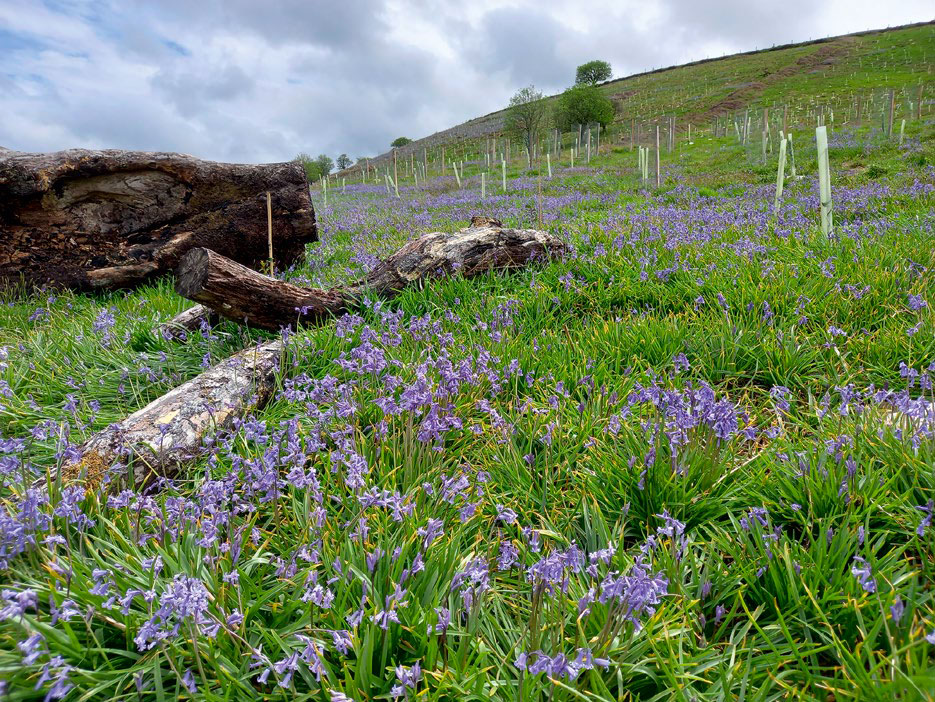The mysterious sea of bluebells that appeared on Exmoor
A remote part of Exmoor has burst into springtime colour for the first time in centuries.


A mysterious sea of bluebells has sprung up over a hilltop on Exmoor, a beautiful echo of the woodland that once covered the spot centuries ago.
A new 12-hectare (30- acre) wood is planned for the site, known as Bye Wood for the trees that grew there for thousands of years, and after the ground was prepared for tree planting an unexpected flourishing of the long-dormant plants took place.
‘The bluebells must have persisted beneath the bracken for several hundred years since it last had a tree canopy. Now that we’ve managed the bracken, they have flourished,’ explains senior woodlands officer Graeme McVittie.
‘These are ancient woodland indicators, so we are in a sense re-creating the conditions for an ancient woodland..'
Planting began last winter, with 8,000 sessile oaks (including a grove of 70 that are part of The Queen’s Green Canopy), mountain ash, Scots pine and Devon service trees already in the ground. 5,000 more will be planted this winter, thanks to an army of volunteers and contractors. Deer fencing will be used until the young trees establish.
The bluebells won't be affected by the planting: these pretty woodland plants will continue to flourish in the shade of the trees overhead, while more varieties will also return.
'The suppressed bulbs have re-activated, and flowering bluebells have carpeted the site,' adds Jack Hunt of Exmoor National Park. 'As our new trees grow, they'll provide dappled shade and help to maintain and diversify the new woodland's ground flora.'
Exquisite houses, the beauty of Nature, and how to get the most from your life, straight to your inbox.
The project is funded by CareMoor Woods & Trees Appeal, with donations from Somerset West and Taunton Council, the Exmoor Charitable Trust and the Lanacre Barn Gallery. ‘As our new trees grow, they’ll provide dappled shade and help to maintain and diversify the new woodland’s ground flora,’ adds Jack Hunt, woodlands assistant for the Exmoor National Park Authority.
Visit www.exmoor-nationalpark.gov.uk/caremoor for further information and to donate. Another CareMoor appeal currently under way is seeking funds for meadow creation on Exmoor.
Annunciata is director of contemporary art gallery TIN MAN ART and an award-winning journalist specialising in art, culture and property. Previously, she was Country Life’s News & Property Editor. Before that, she worked at The Sunday Times Travel Magazine, researched for a historical biographer and co-founded a literary, art and music festival in Oxfordshire. Lancashire-born, she lives in Hampshire with a husband, two daughters and a mischievous pug.
